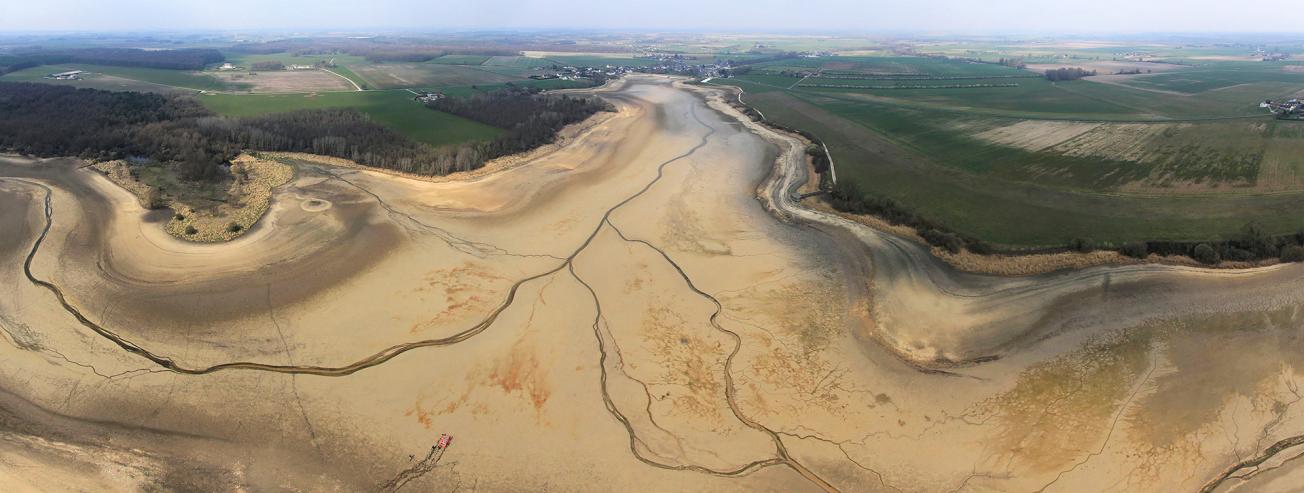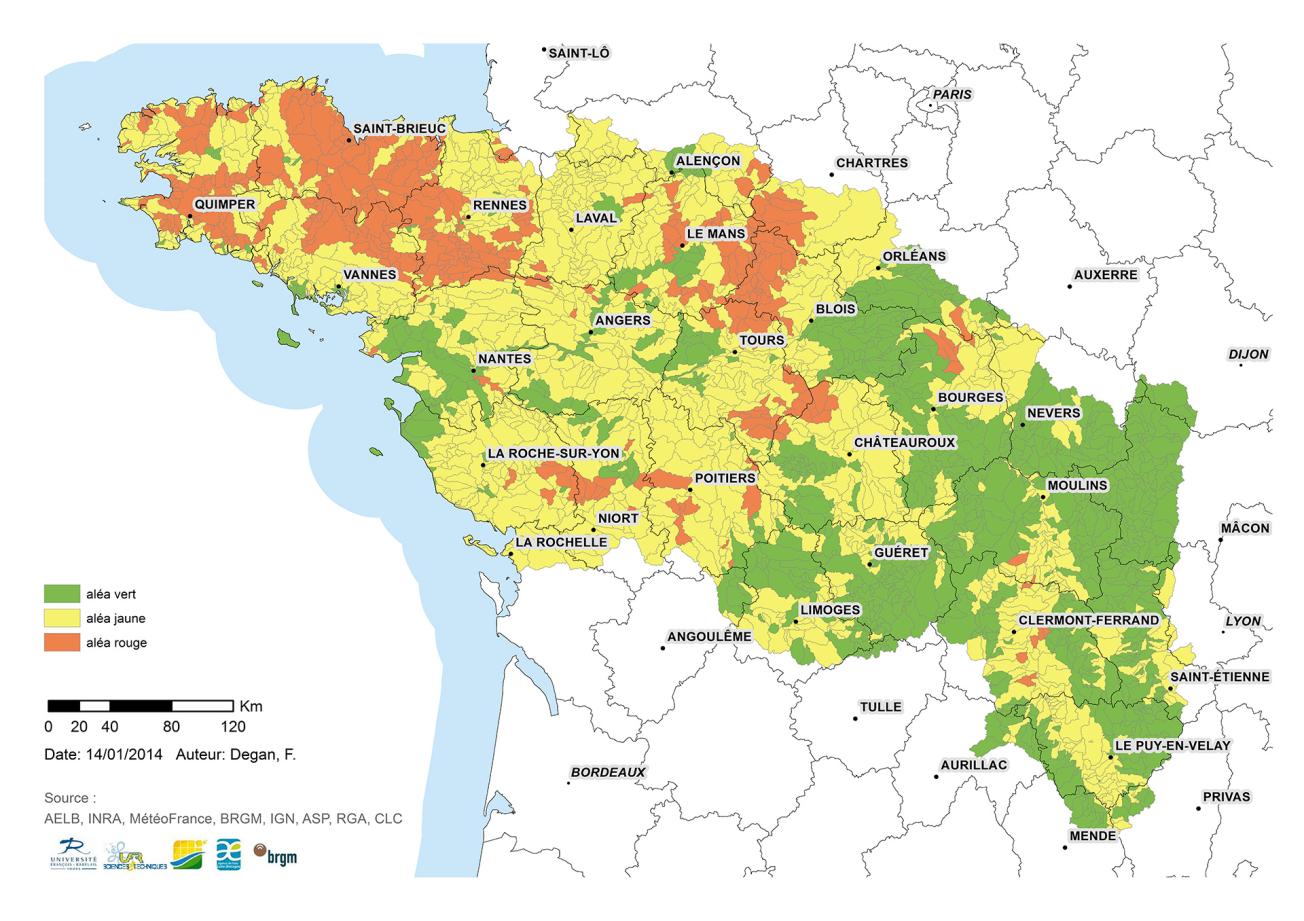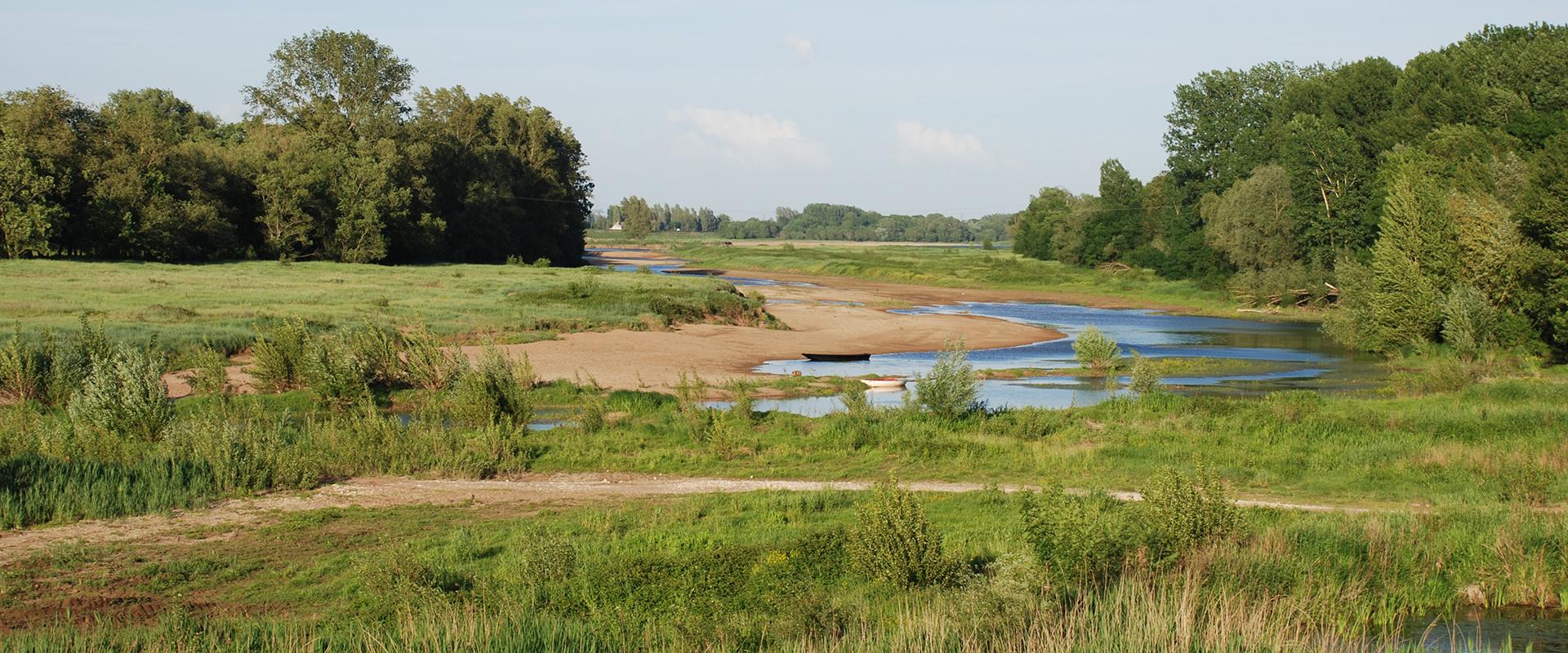
Sampling campaign in the Louroux pond to estimate the scale of silt deposition following erosion.
© BRGM
Changes in the Loire-Brittany landscape due to human activities in recent decades to satisfy agricultural and other land use needs have accelerated soil erosion, which is now endangering the quality of water bodies.
Upstream waterways favourable to aquatic species are silting up, ecosystems are affected by chemical contamination (from fertilisers, pesticides or trace elements contained or dissolved in sediments), and it has become essential to characterise these phenomena more accurately in order to define appropriate prevention or remediation measures.
This is the aim of the Verseau project (and its offshoots, Tracksed, Drastic and Describe), commissioned by the Loire-Brittany Water Agency to prepare its new Water Management Master Plan (SDAGE) for 2016-2021, under the EU Water Framework Directive requiring the “good status” of water bodies in Europe.
Mapping erosion risks
This three-year project involved the BRGM, the Water Agency and the University of Tours. Aim: to map erosion risks in the Loire-Brittany basin (155,000 km²) to identify the most exposed zones in the area, given that the only previously available source of information was an extract from the national soil erosion map, which is inaccurate at this scale and obsolete.

Erosion risk map of the Loire-Brittany basin.
© Studio Pierre
To understand and quantify particle transfers and soil erosion, Verseau used a multiscale approach. Although the sources of these sediment transfers are known, their relative importance and how they connect with waterways had not been researched in any depth. Verseau addressed this issue by analysing transfers of materials in hydro-systems at different scales (across the Loire-Brittany basin as a whole and in small catchment basins), to identify and quantify processes that have been little researched so far, such as erosion and connectivity triggered by human modifications (river channelling, land drainage, etc.).
Erosion caused by agricultural drainage
Our studies located and quantified the processes involved at their source (surface and riverbank erosion, movement of soil masses, riverbed compaction, etc.), and identified transfer processes (patterns of connectivity with waterways) and processes governing sediment deposits in rivers. They also revealed the importance of a factor that had not yet been considered in flat (or moderate) topographic contexts and in temperate climates: erosion due to agricultural drainage, which has had significant consequences since the post-World War II period when the practice became widespread.
Thanks to more accurate identification of the sources of erosion in space and time, and by mapping risks in basins upstream from lowland areas with a dense human fabric, these studies are providing key material to support sustainable spatial planning policies.
The results will enable the Loire-Brittany Water Agency to set priorities for its erosion control measures, for example by encouraging agri-environmental practices that cause much less erosion than drainage, or grass buffer strips along river banks.







